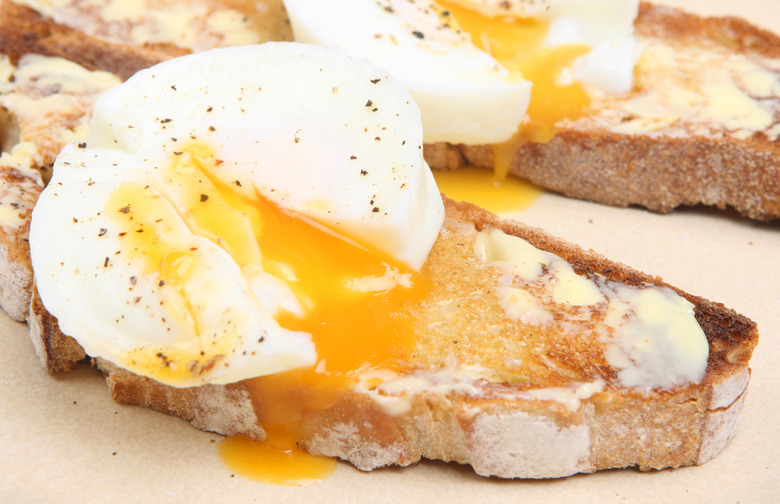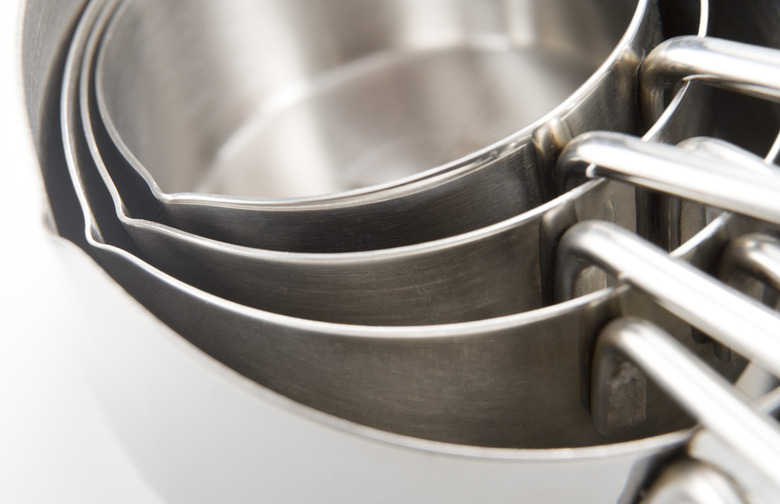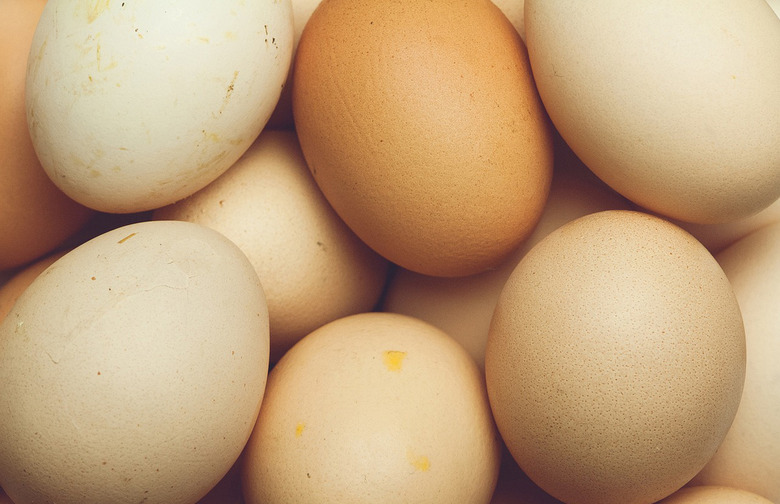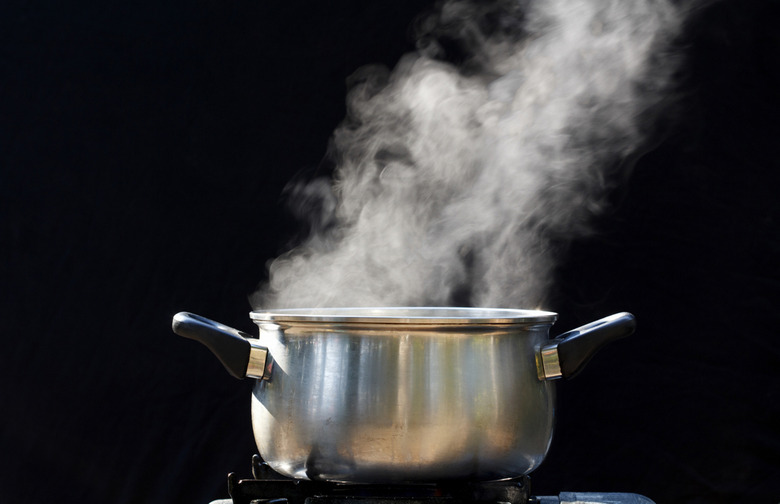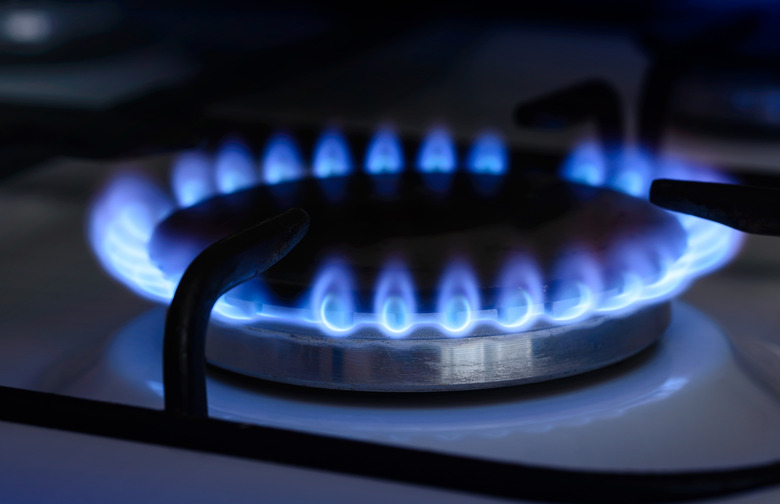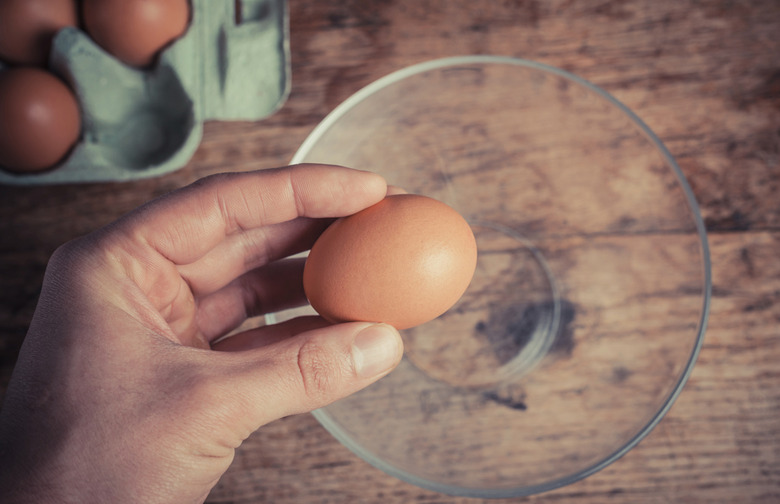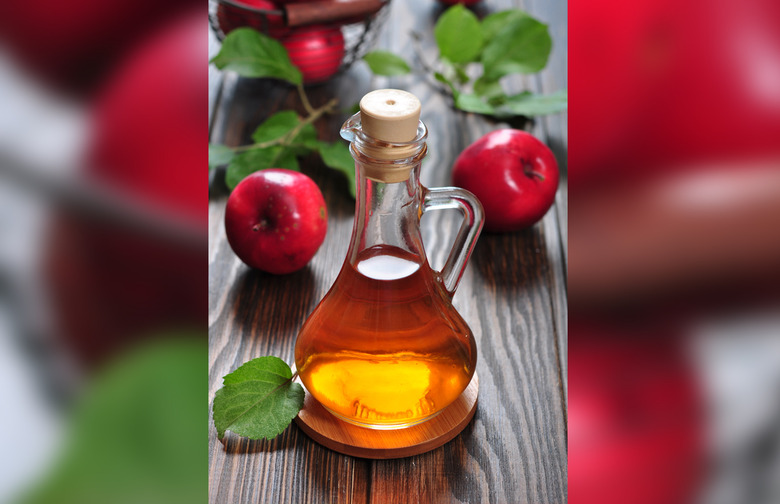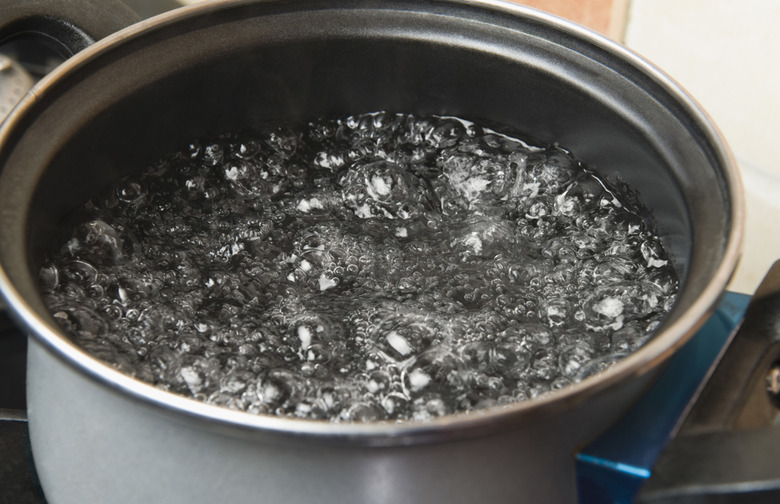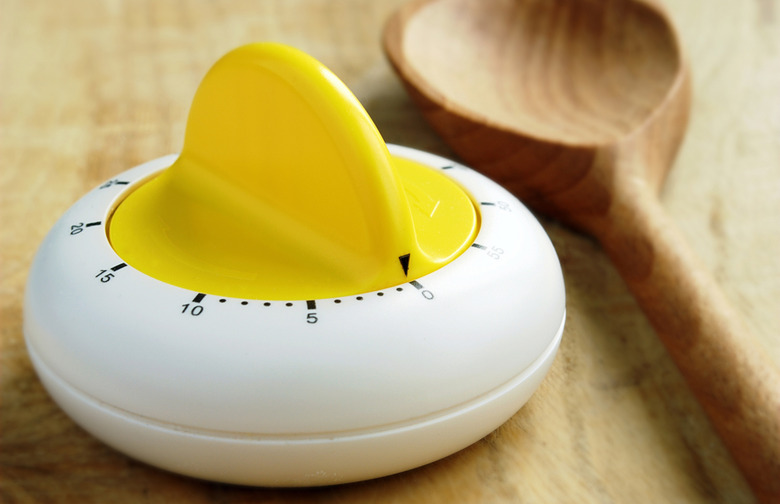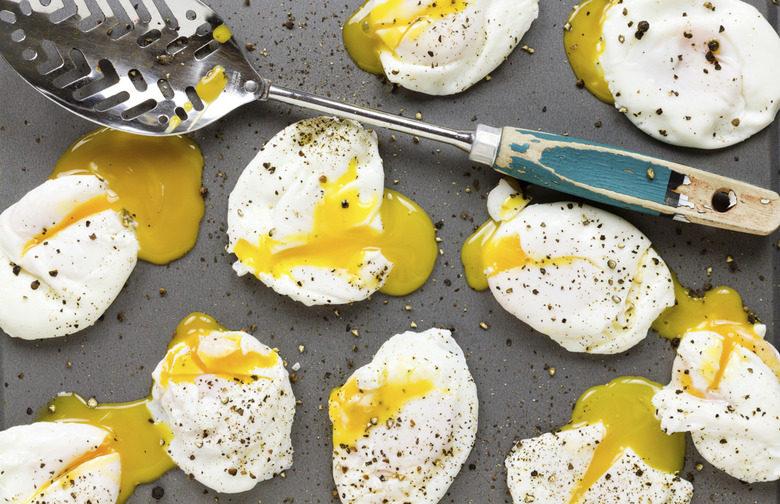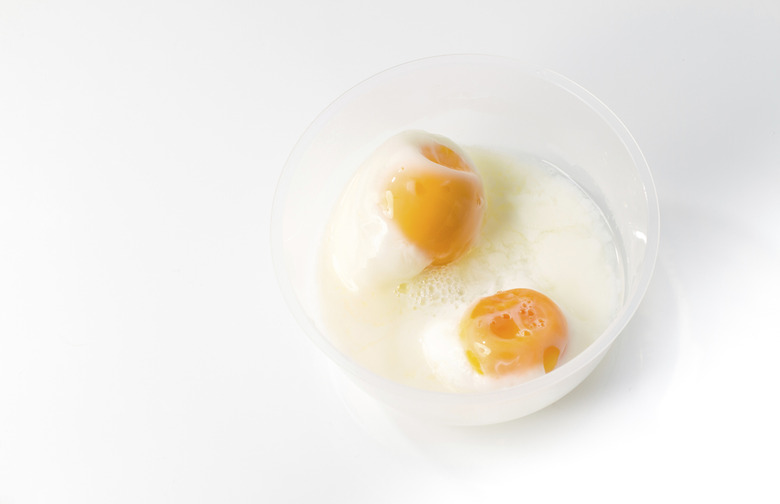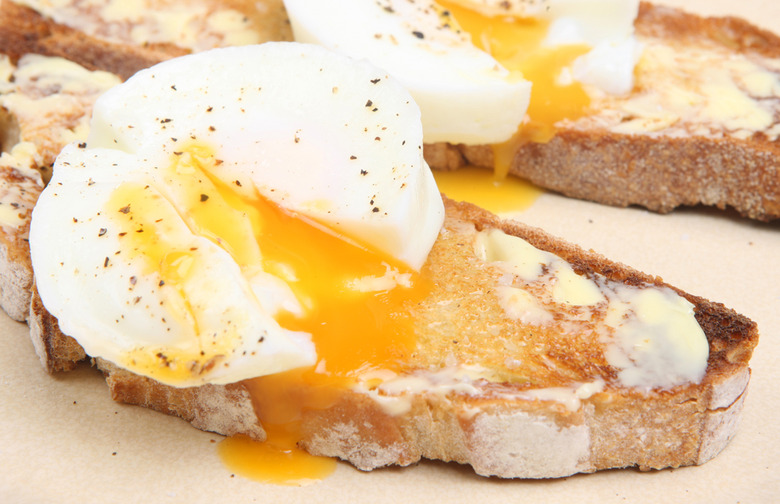How To Poach The Perfect Egg Every Time
Once you get the hang of these simple steps, you can poach multiple eggs at a time, just be sure not to over crowd the pan. Further instructions on how to cook poached eggs in batches without turning out lukewarm yolks is detailed in the complete steps. One important thing to note is that with each additional egg, the water temperature drops slightly making it necessary to add about 30 seconds per egg to the cooking time to ensure the whites are cooked through, because no one likes slimy egg whites.
All you need to complete this poached egg dish is a bowl of creamy grits and your favorite eggs benedict recipe replete with decadent hollandaise to turn your eggs into a magnificent start to your morning.
Tools and Ingredients
The Egg
Fresh eggs are essential when poaching an egg. As eggs age, the whites lose some of their stiffness, and the result is a looser, messier looking poached egg.
Heat the Water
Place your pot of water on the stove over medium-high heat. You pot should be filled to about two-thirds full. Bring the water to a boil. It is easier and quicker to bring water to a perfect simmer after boiling than it is to go from cold water to a simmer.
Reduce to a Simmer
Cracking the Egg
Crack the egg into a cup or measuring cup. A handled cup will give you more control when adding the egg to the water, so that the egg whites stay together, and you don't splash yourself with hot water.
Adding the Vinegar
Before adding the egg to the water, add about a tablespoon of white vinegar to the simmering water. The vinegar works as a cohesive, keeping the egg yolk and whites together in a compact shape. As long as you only add a splash of vinegar the taste will be unnoticeable, but the texture of the egg whites will be firmer.
Adding the Egg to the Water
Lower the cup to the surface of the water and tip the cup to lower the egg into the gently simmering water. Then, use the slotted spoon to spin the water in the pot, forming almost a vortex. Stir for about 15 seconds until the egg whites start to look opaque.
Cooking Time
Four minutes will produce a slightly runny center with a firm white. However, if you are cooking poached eggs for a crowd and need to cook your eggs in batches, cook for about three and a half minutes, as you don't want to overcook the eggs when you go to re-heat them just before serving. You can cook multiple eggs at a time, just be sure not to overcrowd the pan and add the eggs in rapid succession, but be sure to give the pot a quick stir between each egg so that the whites don't stick.
Removing the Egg
Once you have timed your egg, remove it from the water using a slotted spoon. Gently lift the egg from the water, allowing any excess water to drain off back into the pot. If you are cooking in batches, put your cooked eggs to the side on a paper towel-lined plate. Just before serving, drop the eggs back into the simmering water for 15 to 30 seconds to warm them, and then remove from the water and continue to the final steps.
Drying the Egg
This step is crucial, especially if you intend to top your poached eggs with hollandaise sauce. If you don't gently dry your egg with a paper towel, the water will cause the sauce to slide off the egg.
Seasoning and Serving
Once your egg is dried, plate the eggs on their own, atop a piece of toast, or over grits. Then season with salt, pepper, and top with hollandaise if you like.
